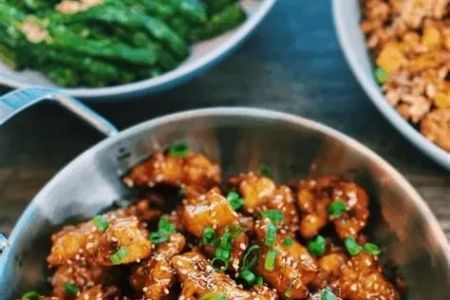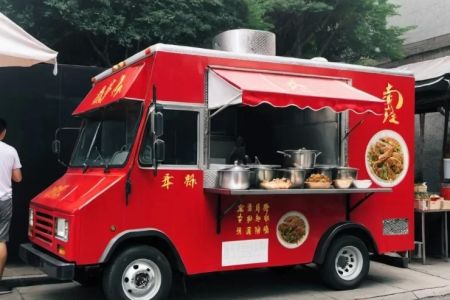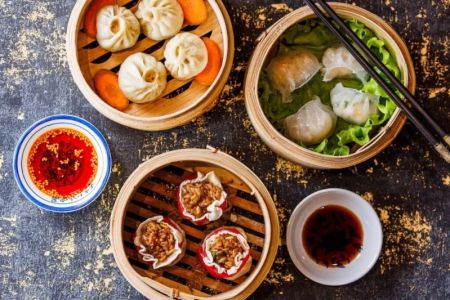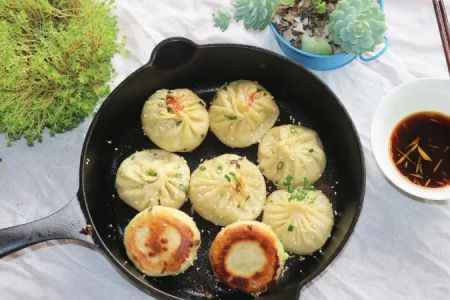- 1-Traditional-Chinese-Cuisine-Overview
- 2-Regional-Diversity-in-Chinese-Food
- 3-Daily-Eating-Habits-of-Chinese-People
- 4-Modern-Trends-and-Influences-in-Chinese-Diet
- 5-Food-Culture-Stories-and-Personal-Insights
- 6-Where-to-Find-Authentic-Chinese-Food
1. Traditional Chinese Cuisine Overview
Chinese cuisine is a fascinating blend of history, culture, and regional diversity, making it one of the richest food traditions in the world. When exploring what Chinese people eat in China, it is essential to understand the foundation of traditional Chinese cuisine. Rooted in thousands of years of culinary development, Chinese food is centered around balance—whether it is the balance of flavors like sweet, sour, salty, bitter, and umami, or the harmony between ingredients, such as meat and vegetables, or cooked and raw items.
Staples like rice and noodles form the backbone of daily meals, especially in southern China, while wheat-based foods like steamed buns and dumplings are predominant in the north. Classic dishes such as Peking duck from Beijing, Sichuan hotpot, and Cantonese dim sum are not only food but cultural symbols. These dishes highlight techniques like steaming, stir-frying, and braising that have been perfected over generations.
Chinese culinary philosophy also emphasizes the medicinal value of food, integrating herbs and spices believed to improve health. This philosophy explains why traditional meals often include ginger, garlic, and various greens, enhancing both flavor and wellness.
1.1 Key Ingredients and Cooking Techniques
Common ingredients include soy sauce, rice vinegar, tofu, and a wide variety of fresh vegetables. Cooking methods like wok stir-frying and slow simmering are designed to preserve nutrition and flavor. The diversity in textures and aromas is another hallmark of authentic Chinese food, making each meal a multisensory experience.
2. Regional Diversity in Chinese Food
China’s vast geography and multiethnic population have created incredibly diverse culinary traditions. When we ask “what do Chinese people eat in China,” the answer depends heavily on the region.
2.1 Sichuan Cuisine is famous for its bold use of chili peppers and Sichuan peppercorns, delivering the signature “mala” (numbing-spicy) sensation. A classic example is the Sichuan hotpot, where diners cook various meats and vegetables in a bubbling, spicy broth.
2.2 Cantonese Cuisine prioritizes freshness and subtle flavors. Dim sum, a collection of bite-sized steamed dishes like shrimp dumplings and pork buns, is a favorite morning ritual in southern cities like Guangzhou and Hong Kong.
2.3 Northern Chinese Food often features wheat-based foods. Staples like hand-pulled noodles, steamed buns, and dumplings are key to daily meals. Beijing’s famous Peking duck is a renowned northern specialty.
2.4 Other notable styles include Shanghainese cuisine, known for its sweetness and delicate seafood dishes, and Yunnan cuisine, famous for its mushrooms and use of herbs.
2.2 Impact of Geography and Climate
The regional culinary differences also stem from geographic and climatic factors. Coastal areas have more seafood dishes, while inland regions rely more on meats and preserved foods. Seasonal variations influence ingredient availability, which directly shapes menus throughout the year.
3. Daily Eating Habits of Chinese People
Understanding what Chinese people eat in China involves looking beyond famous dishes and into daily habits and mealtime customs.
Most Chinese people eat three meals a day, with breakfast typically being light and quick, including items like congee (rice porridge), steamed buns, or fried dough sticks. Lunch and dinner are larger meals, often shared family-style, with multiple dishes served simultaneously to encourage communal eating.
Rice or noodles almost always accompany meals, alongside vegetables and protein sources such as pork, chicken, fish, or tofu. Street food culture is vibrant, offering snacks like jianbing (savory crepes) and baozi (steamed buns) that are popular for breakfast or snacks.
3.1 Role of Food in Social Life
Eating in China is a social activity, with meals often lasting over an hour, allowing family and friends to connect. This tradition of sharing dishes contrasts with Western individual plating and encourages a dynamic dining experience. Festivals like the Lunar New Year bring special foods—such as dumplings symbolizing wealth or sticky rice cakes representing togetherness.
4. Modern Trends and Influences in Chinese Diet
While traditional food remains central, China’s rapid modernization has introduced new eating habits and culinary influences. Urban areas have seen an increase in international cuisines, fast food, and health-conscious diets.
Young people in cities often balance traditional meals with convenience foods or fusion dishes blending Western and Chinese elements. The rise of food delivery apps has transformed how meals are ordered and consumed, making it easier to access diverse flavors.
Health trends such as plant-based diets and organic food have gained traction, influencing how many Chinese choose ingredients and prepare meals. However, traditional Chinese dietary principles still underpin most choices, emphasizing balance and natural ingredients.
4.1 Food Safety and Quality Concerns
Modern consumers are more aware of food safety and nutrition. In response, there is a growing demand for transparent sourcing and higher-quality ingredients. Many rely on trusted platforms like Chinese Food to find authentic products, reliable stores, and culinary services that meet these standards.
5. Food Culture Stories and Personal Insights
Exploring what Chinese people eat in China inevitably leads to fascinating stories that reveal much about the culture and values embedded in food. For example, the story of how Peking duck evolved from a royal delicacy to a beloved street food shows how Chinese cuisine adapts while preserving tradition.
On a personal note, many Chinese families pass down recipes and cooking techniques through generations, with food acting as a powerful link between past and present. During a recent trip to Chengdu, a local family shared their secret recipe for Mapo tofu, emphasizing the importance of fresh ingredients and the right balance of chili and peppercorn. These personal experiences highlight that Chinese food is not just sustenance but a way to connect, celebrate, and express identity.
5.1 Popular Online Food Trends
Popular internet phenomena like “foodie challenges” around spicy Sichuan dishes or street food exploration videos also bring Chinese food culture to a global audience. These trends help spread awareness of what Chinese people eat in China, encouraging culinary curiosity and appreciation worldwide.
6. Where to Find Authentic Chinese Food
For those eager to experience genuine Chinese cuisine or discover more about the variety of dishes enjoyed across China, trusted resources are key. Our platform, Chinese Food, offers curated recommendations for the best products, stores, and services, tailored to meet diverse culinary needs.
Whether you want to buy high-quality ingredients or find authentic restaurants, Chinese Food connects you to verified options that uphold traditional flavors and modern quality standards. This is especially helpful for food lovers seeking to recreate or savor true Chinese meals outside China.







